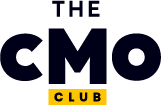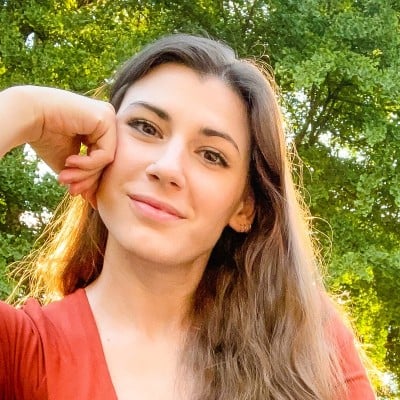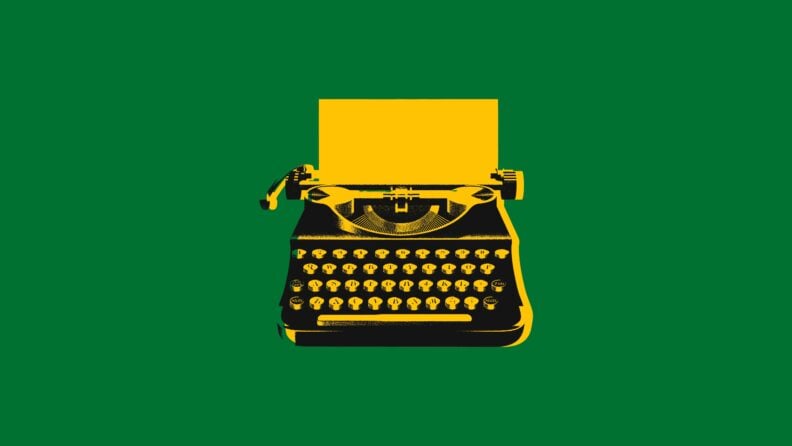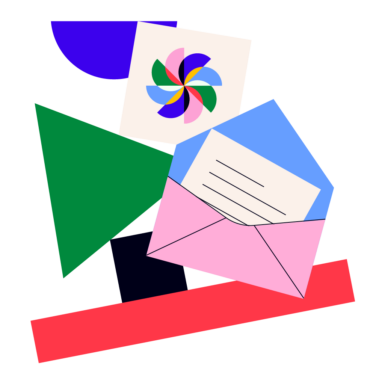B2B SaaS startups are notoriously bad at playing the long-term brand game. Under pressure from investors, market trends, and competition, leadership encourages short-term “make number go up” tactics.
Tactics that might goose conversion and revenue now but build no brand equity and lasting customer loyalty. Tactics that garner no press, positive public sentiment, or creative accolades.
You know what can do all those things? Brand-level storytelling. If you’ll allow me some hard-earned cynicism, this general neglect of brand storytelling at B2B SaaS startups is a feature, not a bug. If they were being honest, most VC-backed leadership teams would say their calendars don’t go far enough to appreciate brand anyway, so why “waste” money on it?
They’re focused on their next raise, an IPO, or to get fit ’n’ flirty enough to be sold for parts. The sentiment, in my experience, is not “build something strong enough to create lasting value for many people over time,” but rather “build something efficient enough to wring out the most value for a few people quickly.”
The True Power of Brand Storytelling
This is a challenging environment for creatively minded marketers who understand the power of brand storytelling. Rather than saying the VC-backed ecosystem sets brand marketing up to fail, I’d encourage brand marketers at B2B SaaS companies—or any organization with a long strategic timeline—to lean into one benefit of brand-level storytelling that everyone can appreciate:
Differentiation.
When every company in your category is shouting the same benefits, specs, and speed claims, what makes customers choose you? In overcrowded and commoditized markets (see: AI everything), the answer isn’t more performance marketing or better product features. It’s storytelling.
Creative, strategic brand storytelling isn’t fluff—it’s the fuel for the only differentiation a B2B SaaS company might have. As someone who’s helped build brand stories at Dashlane, Oyster, and now as co-founder of Bonfire working with dozens of SaaS clients, I’ve seen how creative brand marketing becomes the lever for head-turning attention and genuine emotional connection, which can equate to real business impact.
Here’s why.
Stories > Specs
Specs are forgettable. Names are interchangeable. Outcomes are differentiating only in so far as someone else can’t provide them more easily or more cheaply.
Stories are different. Humans respond to narrative. According to Stanford and Harvard Business Review, stories are remembered 22x more than facts. That’s because stories work on multiple psychological levels:
- Belonging and identity: Shared narratives create in-groups. They make your audience feel like your product wasn’t just for them, it was about them.
- Persuasion and influence: Emotionally connected customers are 52% more valuable than even those who rate themselves “highly satisfied.”
- Trust and consistency: When your story shows up the same way across channels and touch points, it builds the kind of brand trust and clear impression that specs alone can’t.
In a time of scarce attention and fragile differentiation, story is how you stand out, connect your brand and your customers’ values, and stay top-of-mind.
This isn’t just theory—it’s measurable. Storytelling-driven brand marketing can impact:
- Brand awareness (via aided/unaided recall, reach)
- Customer sentiment and loyalty (via NPS, sentiment analysis)
- Differentiation (via win/loss rates, surveys)
- Conversion (via incrementality testing, pre/post comparisons)
Yes, you can—and should—measure brand storytelling. (That’s another topic we address with our clients!) But don’t overlook the unquantifiable upside: trust, relevance, and memorability. These intangibles compound over time and create lasting value.These are the intangibles that compound over time and create lasting value.
The Robot War is Here—But Not How You Think
AI is accelerating commoditization. Tools, talent, and creative outputs are starting to look, feel, and sound the same. The result? Product-led differentiation is harder than ever.
Even AI is being commodified. When everyone has similar capabilities, your brand's soul—your point of view, values, and emotional resonance—does the heavy lifting.
The real robot war isn’t between humans and tech; it’s between indistinguishable tech and the samey mush it enables. This is the battlefield where creative marketing wins.
With the right storytelling strategy, with the right creatives and not ChatGPT aficionados, your brand becomes more than a list of features. It becomes a category-defining voice. It becomes a moment of delight, insight, or engagement. It connects with people through narratives that are:
- Uniquely true to you
- Told in resonant ways
- Consistently delivered over time
At Bonfire, we use a brand narrative framework that includes four core story types:
- Category narratives (how you differ in the market)
- Product narratives (what your product enables)
- Persona narratives (what your customer achieves through you)
- Culture narratives (what your brand believes about the world)
You’d be hard pressed to find two companies saying the same thing across all four story types. Each helps transform a brand from just another option into the premium, smart, fun, socially responsible, anti-establishment choice, etc.—all opportunities to capture an audience..
Winning is Short-term. Thriving is Long-term (But Like, for You).
I’ve already aired my sorry outlook on B2B SaaS’s commitment to brand and brand storytelling as a long-term play. I don’t think that means brand marketing is a dying discipline or that there’s no good work in B2B SaaS. But ultimately, the company and job you currently have are less important than the holistic career you want to build!
So let’s talk about another type of differentiation: differentiation for you as a brand-led marketer and storyteller.
In a market that doesn’t reward long-term creative thinking or bold storytelling, you can still invest in work that makes you the person companies will fight over tomorrow. Careers compound like brand equity. When you do brave, strategic, story-first work—even in small ways, even in tough environments—you’re building a body of work that speaks louder than any dashboard (and skills transferable across sectors).
Creative marketers who think long-term—about their craft, point of view, and ability to tell enduring brand stories—shape the future of marketing, not just react to it. The best stories won’t just set your company apart. They’ll set you apart.
Yes, the market might be crowded. But your voice, taste, and creative courage? That’s where real differentiation lives.
In The Long Run...
Brand is a long-term play. But with the uphill battle of internal marketing and politicking to “sell” your leadership team on its value, your efforts are better spent making a case for it as a compelling differentiator.
Your product can be copied; your story can’t. In a crowded market, brand storytelling isn’t just a nice-to-have—it’s a survival strategy. So instead of trying to out-spec your competition, out-story them.
Make your audience feel something. Give them a belief. Show up consistently and creatively with a brand narrative that no one else can claim.
What’s Next?
Ready to keep growing? We've got a couple of other resources you might find helpful, such as:
- The marketing funnel is entirely in your head
- Why brand marketers and product marketers need to be best friends
You should also subscribe to The CMO newsletter to stay on top of trends and get the latest tips, resources, and guides from our community of seasoned marketing leaders straight to your inbox.



